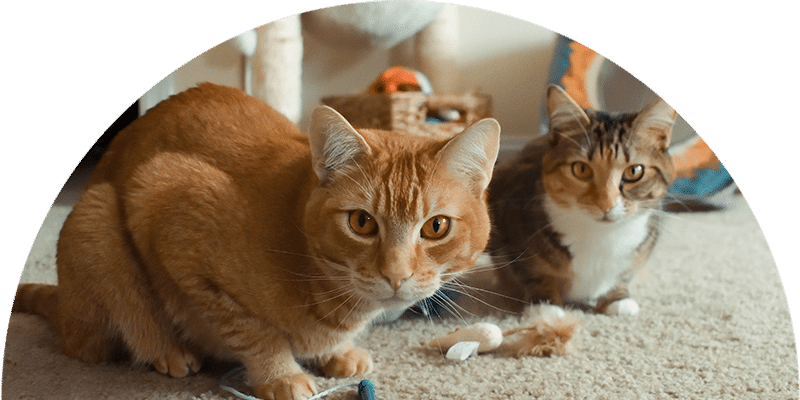Cat Surgery: What You Need to Know When Your Feline Friend Needs a Procedure
Free First Clinic VisitTypes of Cat Surgeries
Cat surgeries generally fall into three categories:
- Elective surgeries: Non-emergency procedures such as spays, neuters, and dental treatments.
- Non-elective surgeries: Necessary but not immediately life-threatening procedures.
- Emergency surgeries: Urgent procedures for wounds, significant injuries, or life-threatening conditions.
Types of Cat Surgeries
Cat surgeries generally fall into three categories:
- Elective surgeries: Non-emergency procedures such as spays, neuters, and dental treatments.
- Non-elective surgeries: Necessary but not immediately life-threatening procedures.
- Emergency surgeries: Urgent procedures for wounds, significant injuries, or life-threatening conditions.
Some of the most common cat surgeries we perform at Love Animal Hospital & Urgent Care include:
- Spays and neuters
- Dental procedures
- Abdominal surgeries (e.g., enterotomy or gastrotomy for foreign body removal)
- Wound management
- Fracture repairs
- Bladder stone removal
Some of the most common cat surgeries we perform at Love Animal Hospital & Urgent Care include:
- Spays and neuters
- Dental procedures
- Abdominal surgeries (e.g., enterotomy or gastrotomy for foreign body removal)
- Wound management
- Fracture repairs
- Bladder stone removal
Pre-Surgery Preparation
Before any surgical procedure, we require pre-operative lab work. This helps us understand how your cat will respond to anesthesia and assess their overall health. Our veterinarians, Dr. Ryan Smith and Dr. Reid Forman, will be looking at:
- Kidney and liver values
- White blood cell count
- Red blood cell count
- Platelet levels
- Protein levels
- Electrolyte balance
These indicators help us ensure your cat is stable and ready for the procedure.
What to Know Before Your Cat’s Surgery
When preparing for your cat’s surgery at Love Animal Hospital & Urgent Care, it’s important to:
- Understand the procedure and its purpose
- Know the expected recovery time
- Be aware of any post-operative restrictions
- Fast your cat as instructed (usually no food after midnight the night before surgery)
- Ensure your cat is comfortable in their carrier for safe transport
What to Know Before Your Cat’s Surgery
When preparing for your cat’s surgery at Love Animal Hospital & Urgent Care, it’s important to:
- Understand the procedure and its purpose
- Know the expected recovery time
- Be aware of any post-operative restrictions
- Fast your cat as instructed (usually no food after midnight the night before surgery)
- Ensure your cat is comfortable in their carrier for safe transport
Anesthesia Monitoring
At Love Animal Hospital & Urgent Care, we take your cat’s safety seriously. During surgery, our highly trained veterinary technicians closely monitor your cat’s anesthesia while our experienced veterinarians perform the procedure.
Anesthesia Monitoring
At Love Animal Hospital & Urgent Care, we take your cat’s safety seriously. During surgery, our highly trained veterinary technicians closely monitor your cat’s anesthesia while our experienced veterinarians perform the procedure.

Post-Surgery Recovery
Recovery time varies depending on the type of surgery:
- Most soft tissue surgeries: About 10 days
- Dental procedures: 1-2 days
- More extensive surgeries (e.g., wound repairs, abdominal surgeries): Up to 2 weeks
Helping Your Cat Recover at Home
To ensure a smooth recovery:
- Follow all discharge instructions carefully
- Administer pain medications and antibiotics as prescribed
- Use protective cones or collars as instructed
- Enforce any activity restrictions
- Monitor the incision site for signs of infection or complications
- Contact us immediately if you have any concerns


FAQs About Cat Surgery
At Love Animal Hospital & Urgent Care, we’re committed to providing the best possible care for your feline friend before, during, and after surgery. If you have any questions or concerns about an upcoming procedure, please don’t hesitate to contact us at (657) 756-5683 or visit our website at Love.vet. Our team, led by Dr. Ryan Smith and Dr. Reid Forman, is here to ensure your cat receives the highest quality surgical care in Huntington Beach, CA.

